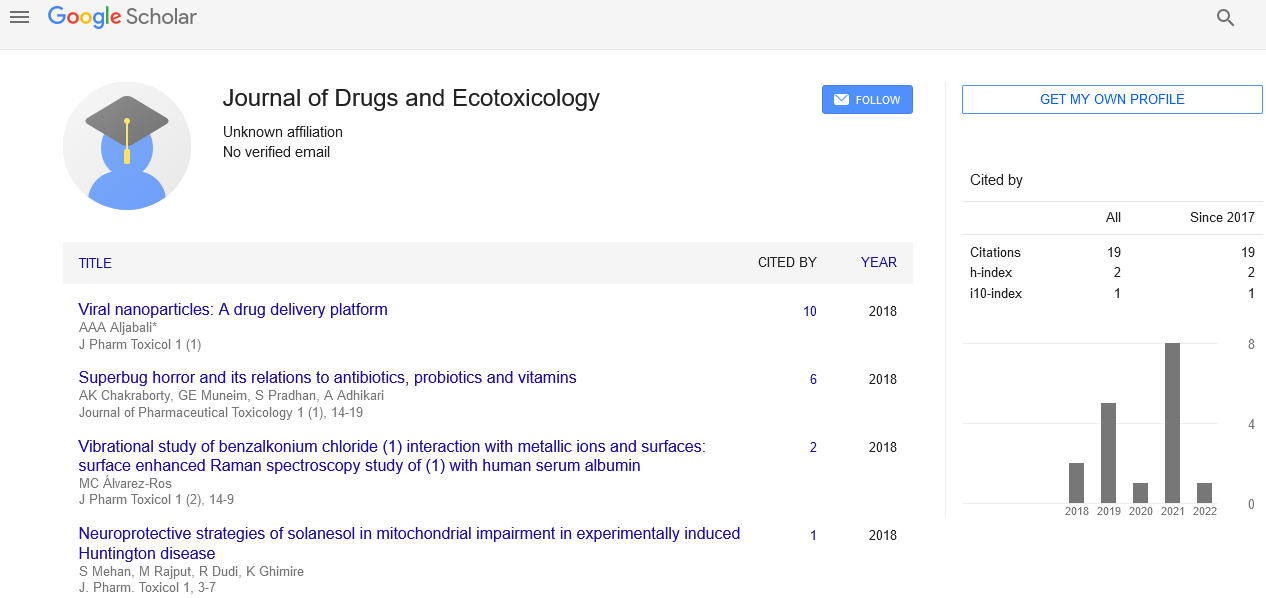Typologies are created for both criminal and drug-using behavior
Received: 03-Mar-2022, Manuscript No. puljde-22-5280; Editor assigned: 05-Mar-2022, Pre QC No. puljde-22-5280 (PQ); Accepted Date: Mar 22, 2022; Reviewed: 21-Mar-2022 QC No. puljde-22-5280 (Q); Revised: 21-Mar-2022, Manuscript No. puljde-22-5280 (R); Published: 29-Mar-2022, DOI: 10.37532.puljde.22.5.2.19-20
Citation: Farukin A. Typologies are created for both criminal and drug-using behavior. J Drug E. 2022: 5(2):19-20.
This open-access article is distributed under the terms of the Creative Commons Attribution Non-Commercial License (CC BY-NC) (http://creativecommons.org/licenses/by-nc/4.0/), which permits reuse, distribution and reproduction of the article, provided that the original work is properly cited and the reuse is restricted to noncommercial purposes. For commercial reuse, contact reprints@pulsus.com
Abstract
The goal of this article is to investigate the key research questions in the study of the connection between drugs and crime as well as the pertinent research literature as it relates to those questions. It is stated that the link between crime and drugs should be explored for each form of crime and each type of drug. Drugs are a major factor in a large number of crimes, and many criminals have a history of using drugs. Although the connection between drugs and crime is frequently not as obvious as it should be, this article aims to improve awareness of these and related topics that have been clouded by misunderstanding and a lack of agreement among specialists.
Keywords
Criminal Behavior, Substance abuse, Drug use, Criminality
Introduction
Predatory crime and the usage of illegal drugs are often believed to be related. Sutherland and Cressey noted almost two decades ago that "felons are over represented in the addict community, and crime rates are greatly raised by drug addiction" in the United States. The authors summarized the state of knowledge at the time by stating that "a detailed characterization of the mechanism by which narcotic substances are associated to criminal conduct has not been produced," despite the fact that they provided a number of ideas to explain the relationship [1].
This study's main objective was to ascertain the degree to which frequent use of addictive medications was linked to property crime. The population of all persons who have committed one or more property offences was used as the sample. Typologies can also help in crime prevention or correctional initiatives, which rely on precisely identifying and addressing the particular issues that underlie various types of criminal conduct. This argument is comparable to a medical one, where it is claimed that when corrective actions are personalized to a precise diagnosis of the condition being attacked, the likelihood of successful prevention or treatment for specific physical disorders is considerably increased [2].
All types of robbery, break-ins and theft, all other larcenies, all forms of fraud, receiving and goods in custody, and all other property offences were the general property crime categories selected.
Criminologists have created typologies that are both person- and crimecentered. The former categorizes criminal activity into uniform categories, such as forced rape, white-collar crime, car theft, and home burglary. Criminologists base these categories on the relationship between the perpetrator and the victim, the crime's technique, and the temporal or spatial characteristics of the illegal activity. Contrarily, person-centered typologies categories people into roles such as jobs, syndromes, criminal roles, and other social and behavioral groups based on parallels between their criminal activity, attitudes, personality patterns, and other apparently pertinent traits.
Three studies are pertinent when discussing the distances to drug criminality. Forsyth wanted to know more about drug market travel among new drug users living in Glasgow neighborhoods that had a low drug use rate, 175 relatively fresh drug users were found using snowball sampling [3].
Conclusion
Academics, drug workers, and those concerned in social policy must recognize how local social settings impact drug use patterns and move away from total dependence on these factors.
Illegal drug purchasers are detained near to their houses, according to previous studies on crime and the idea of crime patterns. Future studies should look at how much policing disparities and strong social ties are reflected in short aggregate market distances.
REFERENCES
- Hser YI, Anglin MD, Grella C, et al. Drug treatment careers A conceptual framework and existing research findings. J Subst Abuse Treat. 1997;14(6):543-58.
[Google Scholar] [ Crossref]
- Chaiken JM, Chaiken MR. Drugs and Predatory Crime. 1990:203-239.
- Sutherland EH, Cressey DR. Criminology. Philadelphia.





